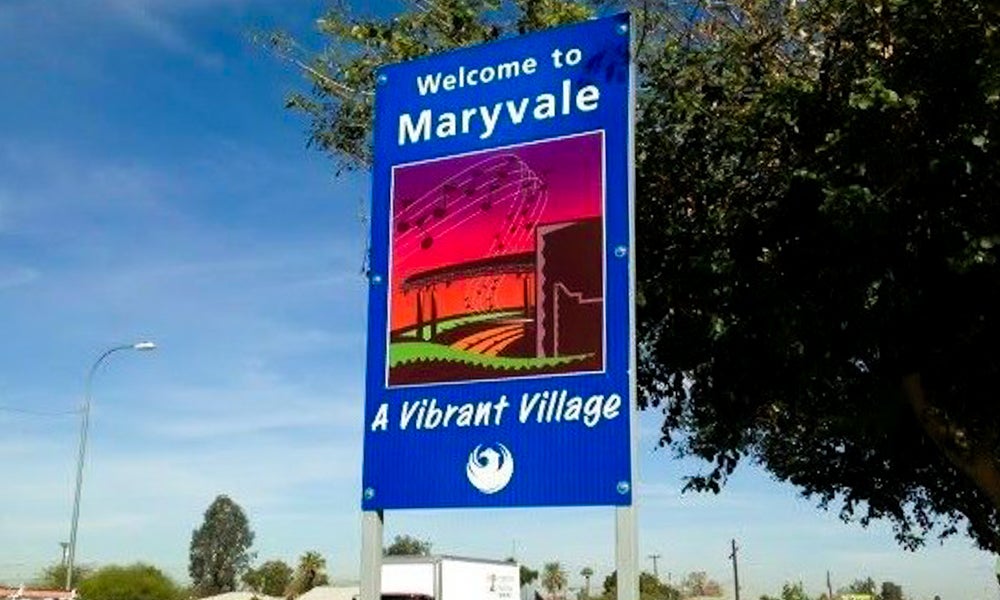
ASU Watts College’s new One Square Mile Initiative hopes to help Maryvale community
The Watts College of Public Service and Community Solutions is in the planning stages of implementing the One Square Mile Initiative, a program that aims to benefit one of the youngest and most populous communities in Phoenix: Maryvale.
The initiative is to help students in Maryvale achieve higher education by setting aside money for scholarships, internships and study abroad opportunities.
According to the Watts College, the One Square Mile Initiative also aims to address issues that may lead to low educational attainment, such as economic hardships, low property values and higher than average levels of crime, all of which affect the Maryvale village.
Erik Cole, director of the Design Studio for Community Solutions at Watts College, said despite Maryvale’s problems, there’s a lot more to the story than crime and blight.
“Generally we have found that Maryvale itself is not what the outside world thinks it is,” Cole said. “Community members expressed to us a real sense of connectedness.”
Cole thinks that the media focuses too heavily on the “deficits” of Maryvale, but often fails to convey the deep sense of community and pride felt by residents.
He stressed that ASU is coming into the community not as a savior, but as a partner, willing to listen and act upon the concerns of the community.
“We have tried to really meet community members where they are and also build relationships and build trust through this process. One of our favorite sayings is that the best collaborations, the best partnerships move at the speed of trust.”
The One Square Mile Initiative relies on local groups who are on the ground improving their community already, such as Chicanos Por La Causa, Estrella Super Moms and other local advocacy groups.
Cole said he believes that ASU can play a role in uniting these groups.
“A lot of those efforts are disjointed and not necessarily connected. That was one of the things…we thought we could offer and help with. Connecting different people and different initiatives,” Cole said.
Despite the deep problems facing Maryvale, Dean Jonathan Koppell, the mastermind behind the initiative, said he sees a lot of reason to be optimistic.
“We’ve been really gratified by the openness of the folks that we’ve approached for their help in reaching community members,” he said. “We try to emphasize we come with humility and an eagerness to learn and they take that at face value.”
According to Cole, some concerns the community has are issues of over-policing, a lack of sufficient street lamps, public transportation, pedestrian safety, crime and violence — interconnected problems that present challenges for improving outcomes.
“More stop signs, less guns,” a student told Cole at a community meeting in Maryvale.
On the education front, students in Maryvale public schools have expressed concern that teachers and school counselors are often less-than-encouraging when it comes to higher education.
Jon Talton, an Arizona historian and former columnist at the Arizona Republic, said he thinks the negative outcomes in Maryvale have a lot to do with structural inequities.
“I think it will be a challenge,” he said of the initiative.
Talton, whose uncle owned a home in Maryvale in the late 1950s, said that back then, one of Arizona’s first planned communities was constructed to house largely white, middle class veterans and their families.
It was also a community with cheaply built houses, which heavily relied on vehicle transportation. Maryvale wasn’t built to last, and it wasn’t intended to house working class people who rely on public transit.
Today, Maryvale has a high Latino population. A high number of its residents are in poverty, and 41 percent of residents are under the age of 19, making it one of the youngest communities in the Phoenix metro area. It’s also huge: if Maryvale were its own city, it would be the fourth most populous city in Arizona. In addition, nearly 40 percent of Maryvale residents lack a high school diploma or equivalency.
Talton is doubtful change can come to Maryvale short of a city-wide systemic modification, including higher wages, mass public transportation and a shift in public attitudes regarding Latinos in the state.
“If my good friend Michael Crow thinks he can do some good there, more power to him,” he said, referring to the president of Arizona State University.
The initiative is still in its vision board stages. Leaders are currently gathering community input and learning how to make the greatest impact.
But one tangible change was the initiative’s partnership with Chicanos Por La Causa Community Service Center, off of Indian School Road and 67th Avenue, to create a mural entitled ‘Sí, Se Puede.’ The mural celebrates the Latino presence in Maryvale and was unveiled March 31 to commemorate the birthday of Cesar Chavez.
The announcement of the One Square Mile Initiative came on the heels of a contribution of $30 million to the College of Public Service and Community Solutions from Cindy and Mike Watts — one of the largest donations ever received by ASU.
“What we’re excited about this gift doing is creating opportunities to equalize the experience of students regardless of what their financial resources are,” Koppell said.